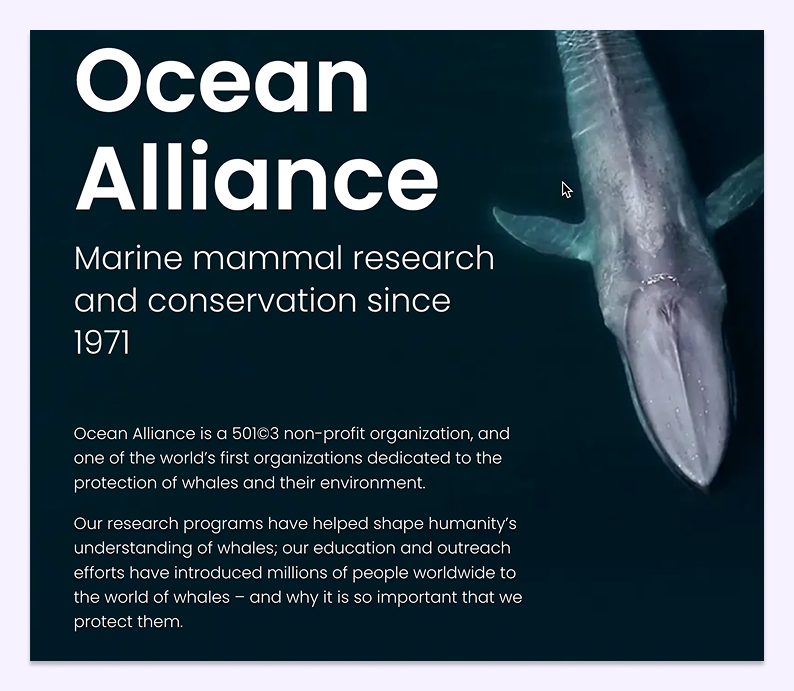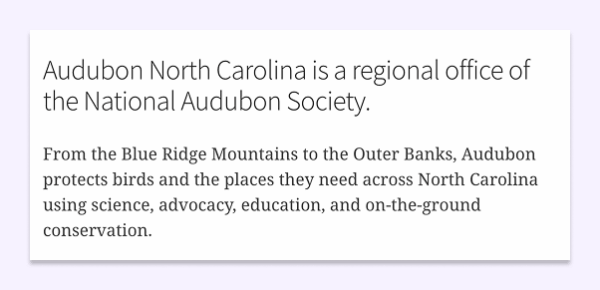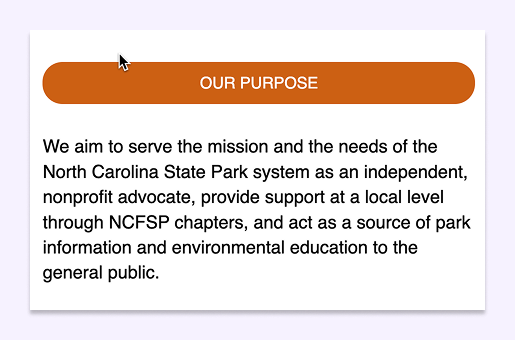This post is part of my UX Quick Wins series. Each month, I share common usability and accessibility issues on nonprofit websites and simple ways to solve them. To get these tips in your inbox, sign up for the UX Quick Wins newsletter.
UX Issue
Your homepage doesn’t explain your nonprofit’s work in concrete, plain-language.
Why it’s a problem
According to a Nielsen Norman Group report, Attracting Donors and Volunteers on Nonprofit and Charity Websites, 60% of donors want to know what an organization does, in plain-language and concrete terms, before they decide to donate.
Many nonprofits have a version of their mission and vision statements on their donation pages, and some include it on their home page, too. But very few spell out exactly what their organization’s work is, instead using flowery language and abstractions. Even fewer do this on their home page and other high-traffic pages.
But the fact is, donors need to see that information long before they head to your donation page. Because they need that information before they make the decision to donate.
And if that’s not enough, here’s another take on the impact of jargon and abstract language on nonprofit websites:
“If we want people to trust philanthropy, we need to stop hiding behind language that makes sense only to us. Because right now, the way we talk about our work matters just as much as the work itself.”
How to solve it
Include clear, simple language about your organization’s mission, goals, and/or work on your homepage and other high-traffic pages where visitors are looking for it before they’ve decided to donate.
Here are 3 examples from nonprofits that describe their organization’s mission and work in plain, mostly jargon-free language.
Most importantly, this information is prominently displayed on their home pages and other high-traffic web pages, where visitors look for this information before they decide to donate or not.
3 examples from nonprofit homepages
Ocean Alliance clearly states what they do and why it’s important: “our education and outreach efforts have introduced millions of people worldwide to the world of whales – and why it is so important that we protect them.”

Ocean Alliance clearly states what they do and why it’s important: “our education and outreach efforts have introduced millions of people worldwide to the world of whales – and why it is so important that we protect them.”

The Audubon Society of North Carolina succinctly describes their mission: “Audobon protects birds and they places they need across North Carolina using science, advocacy, education, and on-the-ground conservation.”
However, the statement could be improved by rephrasing the jargon-y “on-the-ground conservation” to make it more clear to those, like me, who aren’t familiar enough with conservation to know what “on-the-ground” might entail.

The mission and work of the North Carolina chapter of Friends of State Parks is also explained with easy to understand terms. They “provide support at a local level… and act as a source of park information and environmental education to the general public.”
Clarifying what kind of support they provide would make this statement even more clear to potential donors.
Have you found a good example of a nonprofit describing their mission and work in clear, simple language? Reach out and let me know.